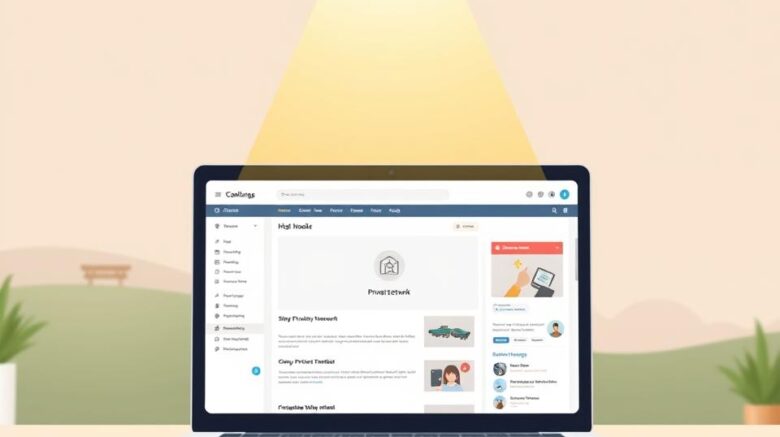Getting to Know Private Blog Network Backlinks
Did you realize almost 60% of SEO experts have employed PBN links? What makes a PBN so alluring is its ability to amplify a site’s authority. That often translates into higher SERP positions. Yet, what truly defines a Private Blog Network in the SEO world? It might seem like a quick way to climb the ranks, yet using PBN SEO services poses significant risks. Those dangers include harsh Google penalties. Let’s explore what is PBN basics and why so many in SEO find them irresistible.
What is a Private Blog Network (PBN)?
A PBN comprises multiple sites set up to generate private blog network backlinks. This method aims to increase search engine visibility by passing link equity from these sites to the primary one. Many PBNs use expired domains, which retain some authority, to create a credible facade for search engines like Google.
What drives a PBN is simple. Marketers employ them to amplify their digital footprint. They achieve this through:
- Acquiring targeted backlinks to lift rankings.
- Controlling the quality and relevance of these backlinks.
- Fostering a web of sites that exchange links in a natural-looking manner.

How do Private Blog Network Links Work?
PBN links work by creating private blog network backlinks that mimic natural links. Each PBN link is engineered to deceive crawlers into thinking it’s a genuine vote of confidence.
SEO practitioners meticulously map keyword and domain usage throughout their network. Yet despite potential instant gains, the method carries grave dangers.
To be effective, backlinks must appear natural, with relevant content around them.
Why SEOs Love PBNs
PBNs provide clear perks for link-building strategists. PBNs let you dictate exactly how, where, and when your links appear.
Expired domains give you a head start on link authority.
They empower you to weave keyword-optimized anchors across your network.
PBN Pitfalls
But these benefits come with major downsides. Primary among these is the threat of manual or algorithmic penalties from Google.
Why Some SEOs Choose PBNs over Traditional Link Building
In the competitive world of SEO, professionals often face challenges with traditional link-building strategies. They eliminate the reliance on third-party permissions.
How to Run a PBN Safely
Avoiding footprints is critical in PBN upkeep. Vet domains meticulously to avoid bad neighborhoods.
How to Detect PBN Backlinks
Use tools like Semrush or Ahrefs to trace suspicious links.
| Indicators of PBN Links | Description |
|---|---|
| Low-Quality Domains | Links from domains with poor authority or less than optimal rankings. |
| Irrelevant Content | Links embedded in content that does not match your site’s niche. |
| Suspicious Anchor Text | Repetitive or irrelevant anchor text patterns. |
| Thematic Similarity | Lack of a coherent theme among linking pages and domains. |
Using Google’s Disavow Tool
- Identify harmful PBN backlinks through thorough analysis.
- Create a disavow file correctly, listing specific URLs or domains to disavow.
- Upload the disavow file to Google Search Console.
Ethical Link Building Alternatives
High-quality content and influencer collaborations also drive organic links.
Myths Surrounding Private Blog Networks
Private Blog Networks (PBNs) are often misunderstood, affecting both new and seasoned SEOs.
PBN Outlook
| Factor | PBNs | Future SEO Practices |
|---|---|---|
| Content Quality | Low emphasis on genuine content | High emphasis on high-quality, valuable content |
| Risk Factor | High risk of penalties | Lower risk with authentic practices |
| User Engagement | Limited engagement | Enhanced user interaction and loyalty |
| Sustainability | Unsustainable in the long term | Focus on sustainable growth |
In Closing
Ultimately, PBN use can jeopardize your long-term SEO success.
